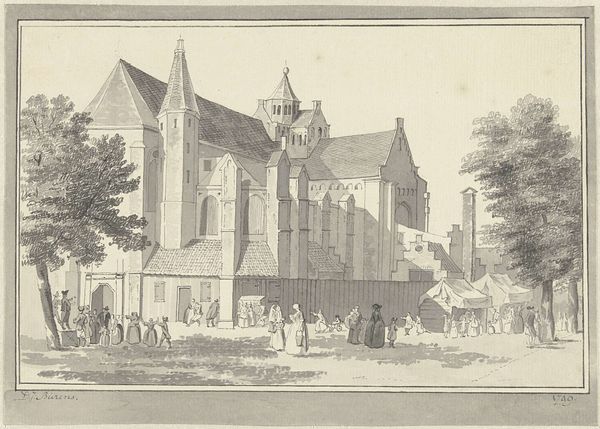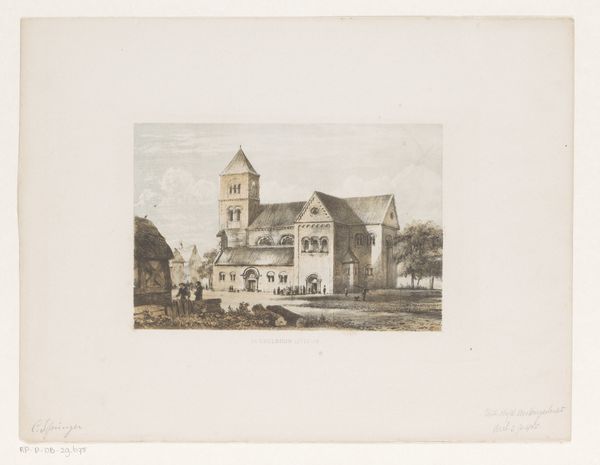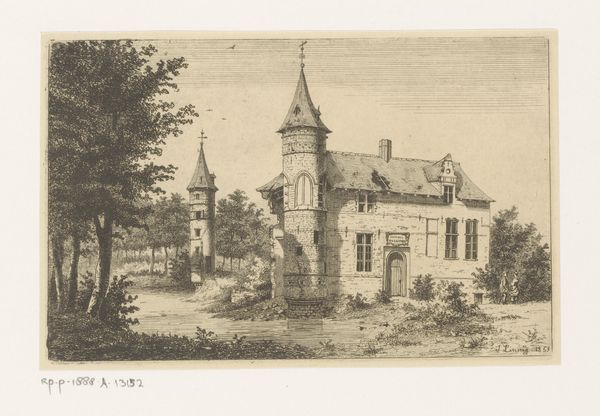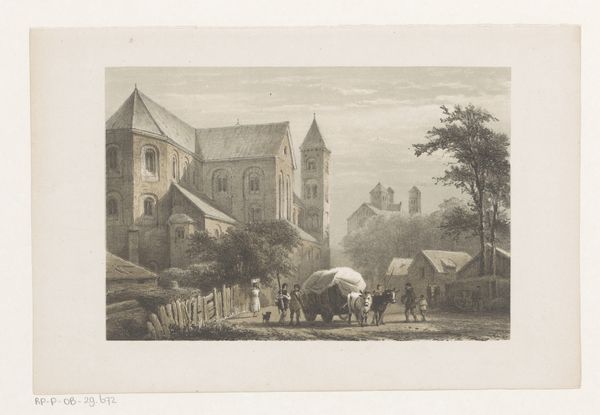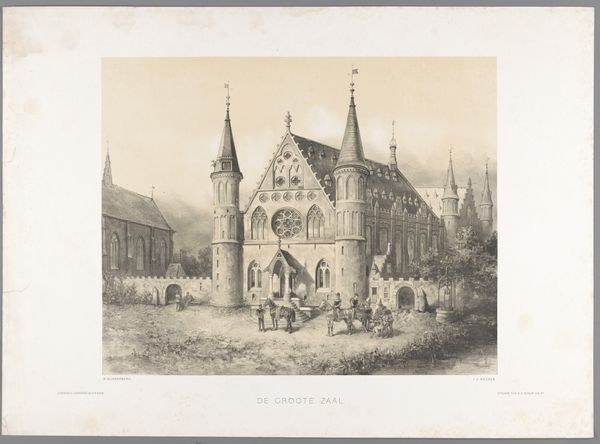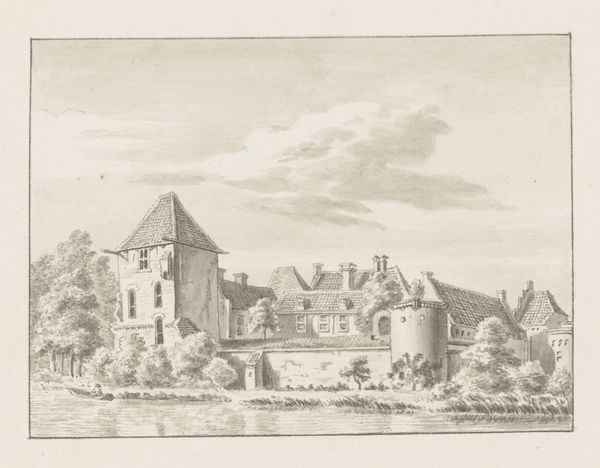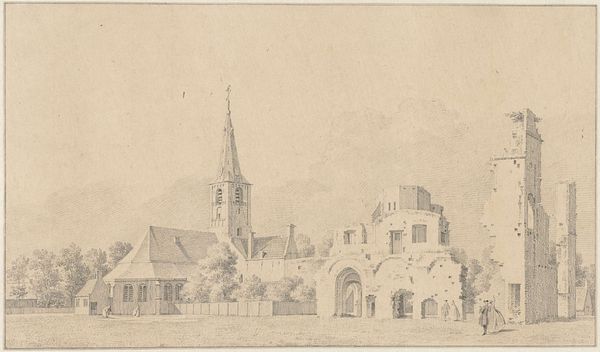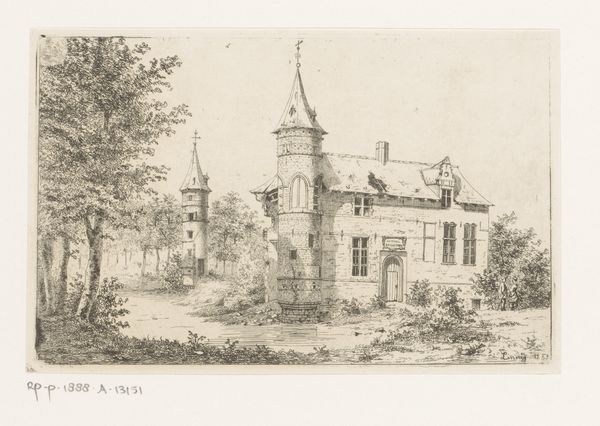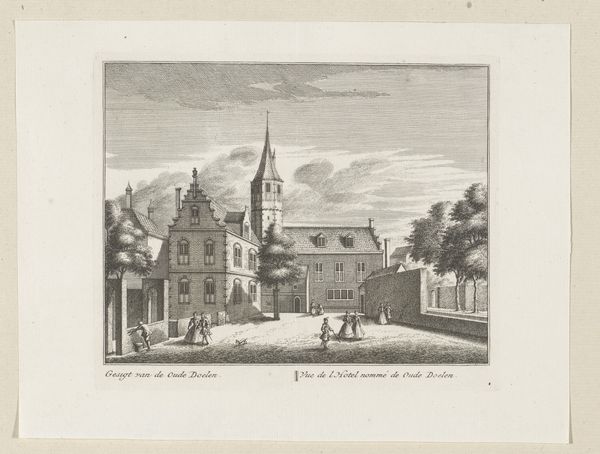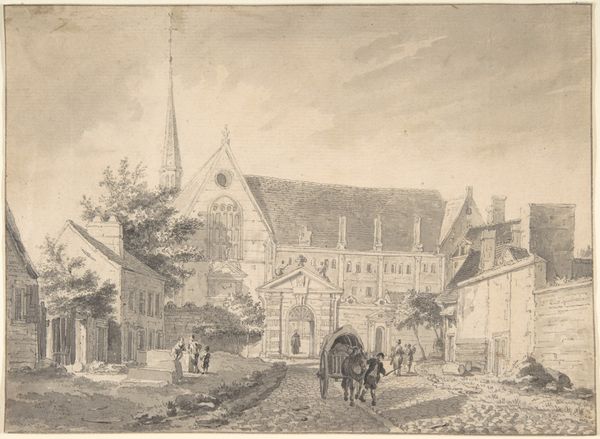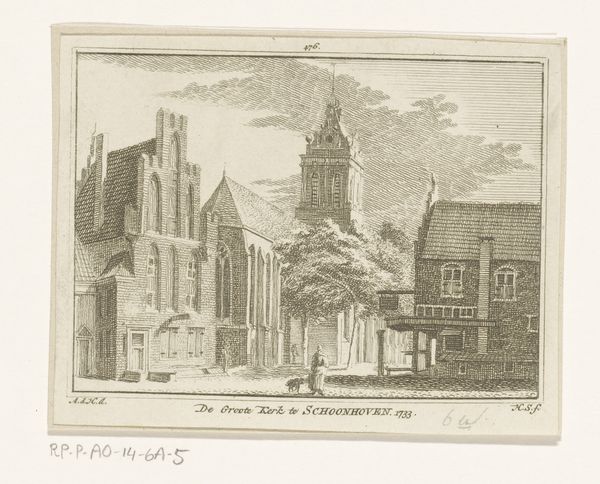
drawing, pencil
#
pencil drawn
#
drawing
#
medieval
#
pencil sketch
#
landscape
#
pencil
#
cityscape
#
realism
Dimensions: height 196 mm, width 273 mm
Copyright: Rijks Museum: Open Domain
Curator: I'm immediately drawn to the stark simplicity of this drawing; it feels remarkably unfussy. Editor: Indeed. Here we have Cornelis Springer's "Twaalfde-eeuwse kerk," or "Twelfth-Century Church," created before 1861. It’s currently held at the Rijksmuseum. Curator: The medium – just pencil on paper – lends it a certain documentary quality, almost like an architectural rendering made on-site. One can almost imagine Springer carefully sketching each line. Editor: Precisely. The materiality is crucial. This wasn’t just a sketch for artistic expression; it was about record-keeping. Consider the role of drawing in the 19th century, before photography was widely accessible. Architectural details, the presence of people – all provide a valuable historical record. It is about what images communicate about the community around them. Curator: Absolutely. The focus on precise rendering of the stone and the building's features gives me the impression of carefully and methodically describing, if not the labor involved, then what all that physical work brought into being in the real world, for communal activities of every sort. Editor: And note how the artist places the church not in isolation, but within its village setting. You see figures clustered around the entrance, going about their daily lives. This suggests the church’s central role, not merely as a religious institution but also a social hub. Its architectural vocabulary provides material access into the social life within those parameters. Curator: I wonder, however, how accurate his portrayal is. Does Springer emphasize realism, or does he subtly romanticize the past? Editor: Ah, there's always the rub! The title itself—"Twelfth-Century Church"—casts the building as an artifact. There is the explicit labeling of time, and therefore cultural memory-making that involves selective, biased representation and memorialization of the cultural landscape. The buildings themselves provide a lens into community building, and how public works became iconic artifacts of those times. Curator: I think I’ll carry this thought with me, in terms of the materiality and production methods of the image, in our own work going forward! Editor: Agreed, a keen reminder of art’s powerful and pervasive role in shaping cultural narratives and in memorializing collective architectural heritage.
Comments
No comments
Be the first to comment and join the conversation on the ultimate creative platform.
